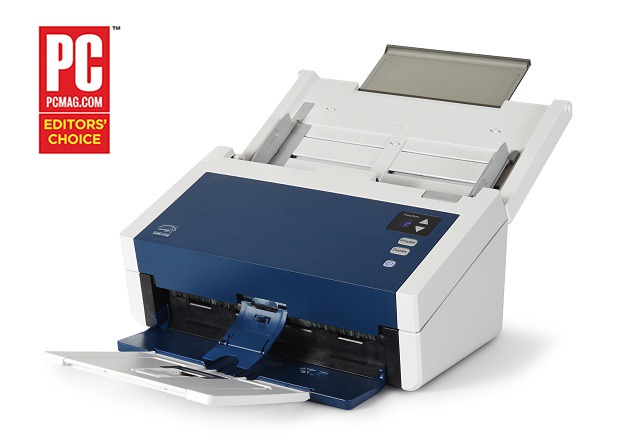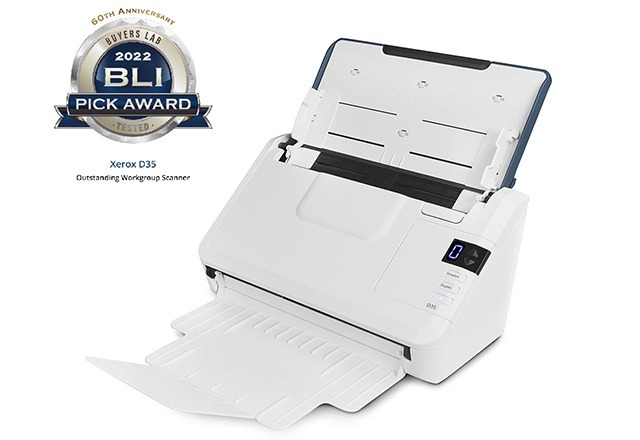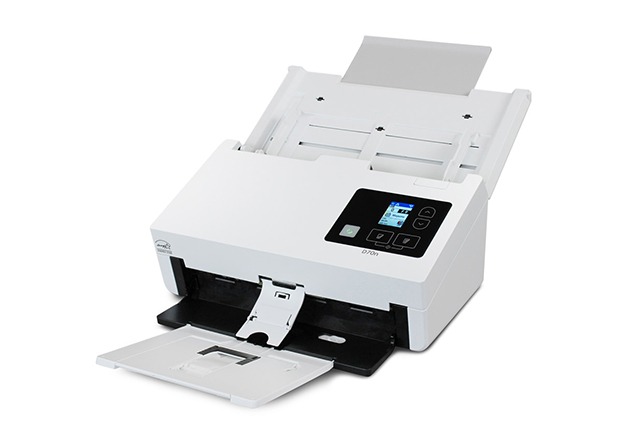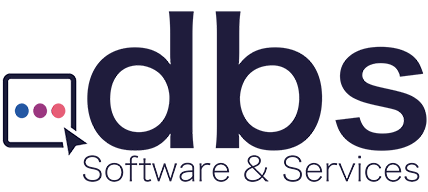
Starting at the source: How to select the right scanner for your Document Management System
If you follow our blog posts, by now you know the key role of Document Management in today’s organizations, and the fact is that given our reliance on technology and information, this is unlikely to diminish anytime soon. However, one of the things that we often see our clients overlook when implementing their systems is the importance of selecting the right scanner, to achieve the most efficient document management process possible. So for this blog post we are delighted to be joined by our partner Visioneer, a leading company in imaging devices – and manufacturer of Xerox standalone document scanners – to share some knowledge on how to select the right Scanner for the job.
First let’s discuss the role Scanners play in Document Management. The primary function of a scanner is to digitally capture the information contained on a physical document, and make that digital version (or file) of the document available for the next step in the process. Virtually any scanner available performs this task with some acceptable level of accuracy. However, to really define the true role of the device (and its importance to your specific organization) requires knowing more details about the capabilities of devices available and the role of the user who will be using the device the most.
Today’s scanners offer a wide range of features and high performance which not only help improve the quality of the digital images generated, but also increase the efficiency and productivity of the users themselves. So selecting the right scanner is really an exercise in matching a) the right device features and performance characteristics to b) the requirements of the particular user for that device. This means that it’s seldom the “one size fits all” approach that will achieve the best results for your particular organization.
On the features and performance side of the equation, the primary things to consider are the quality of the images the user will need (usually defined in dots per inch or dpi), the speed at which the scanner will need to be able to capture (usually defined in pages per minute or ppm), and the type(s) of documents that will be scanned (usually by single or double sided, and color or grayscale). By knowing these details in advance you will quickly be able to create a shortlist of possible scanners for the job at hand.
Armed with the shortlisted options, you can then take a look at the intended use for the device. For instance, is this a scanner that will be used primarily by a single person for light office duty, or will it be shared by several people in a common area, or perhaps by an entire department over a shared network?. Knowing this will help you determine the duty level required for the device, any physical footprint limitations, and even if some level of post-imaging processing features may be needed.
Once all of these things have been identified, it’s just a matter of matching the shortlisted options with the use case to arrive at the best possible options for the job. Always keeping in mind that even within the same organization different departments/users may have different requirements, so this exercise may have to be repeated several times across the different user groups.
One final, but important consideration for choosing a scanner that will be used with a document management system is making sure that the selected device(s) are compatible with industry standard drivers such as TWAIN, and this is to ensure direct compatibility with enterprise document management systems like Docubase.
So now that we know how to select the right scanner for the job, let’s take a look at an example of how this could be applied to help a higher education institution select its scanners for their new document management system. In this example we will say there are three main areas which need to capture physical documents – Registrar/Admissions, Student Services, and Business Operations.
The registrar is a small department of only 3 users who are physically located near each other, and the volume of work peaks in sync with registration cycles. They need to be able to scan a wide range of documents, in different formats and sizes, and do it with high quality and quickly. For this group of users the Xerox Documate 6440 would be a solid option. This scanner features speeds of up to 60 ppm at 200 dpi and is robust enough to handle peaks in usage.


Student Services has more offices than the Registrar but are distributed across campus, so while they need quality scanning and a wide variety of documents including ID cards, they don’t necessarily need the speed or volume that the registrar does. In this case having a few of the Xerox D35 scanners on hand could be a cost effective way to provide the users with a solution. This scanner features speeds of up to 45 ppm at 200 or 300 dpi and has built-in image enhancing technology.
Finally Business Operations, which in this example includes users from several high profile departments including HR, Administration, Finance, and Legal are all scanning mostly black and white documents but value speed and reliability over everything else. In this scenario a good option could be the Xerox D70n scanner. This scanner features speeds of up to 90 ppm at 200 or 300 dpi, a high capacity feeder and can withstand the use of being shared across many power users. With USB and Network connections, multiple people can connect with the D70n Scanner concurrently from any PC connected to the network, thanks to Visioneer VAST Network© technology with TWAIN Direct©. Visioneer VAST Network© technology offers a comprehensive scanner software architecture that provides secure, shared document capture for the networked, cloud and mobile environments of today’s digital workplace.

As you can see in this example, by knowing the features offered by the scanners and matching those to the needs of the users we arrived at very solid options for each area, while at the same time achieving the best cost v benefit ratio.
dbs Software and Services is your one-stop-shop for all your document management needs, including Xerox scanners. When combined with our industry leading document management software LiveForms and Docubase, these great scanners will make it easy to achieve a paperless environment as cost effectively as possible. Please feel free to reach out for any questions you may have about this or any other of our blog topics at any time.

dbs Software & Services (dbs) is a long-standing provider of document management and process automation solutions for education and business, and the exclusive provider of Tessi Docubase® in North America.
Tessi Docubase® is an enterprise-grade modular, secure, and easy-to-use document management system that seamlessly integrates with Business Information Systems. Its secure architecture and a broad range of features make it the perfect solution for a wide range of enterprises and use cases.
dbs LiveForms, is a low-code Business Process Automation platform. Its sole focus is simplifying complex processes by automating repetitive steps – from data capture to alerts, notifications, email confirmations, and everything in between quickly, without involving a programmer.
dbs eSign is a cloud-based electronic signature solution that allows users to manage the signing process for a document, from upload to signing and sealing, from any mobile device or computer.


Leave A Comment